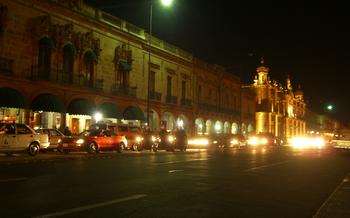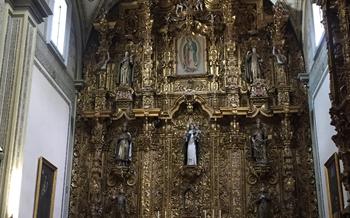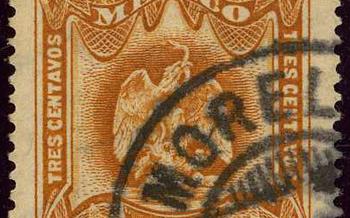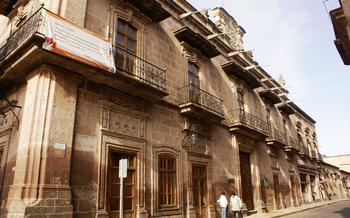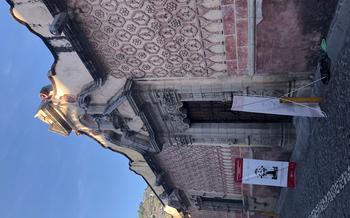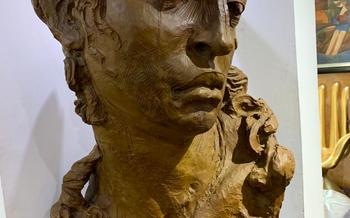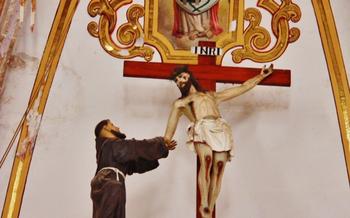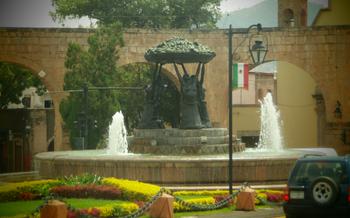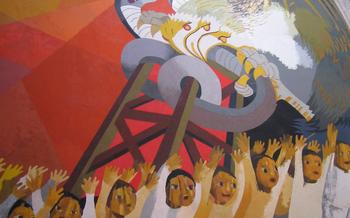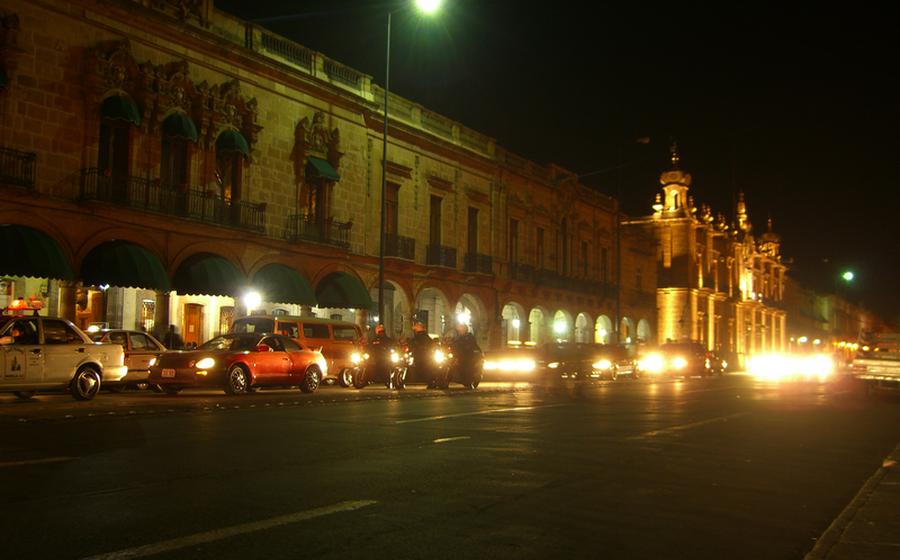
Museo del Estado
- Museo del Estado: A Cultural Gem in Morelia
- The Building's Architectural Marvels
- Pre-Hispanic Art Collection: A Journey Through Time
- The Colonial Art Legacy
- Temporary Exhibitions: A Showcase of Contemporary Art
- Cultural Events and Workshops: A Vibrant Creative Space
- Museo del Estado's Library: A Treasure Trove of Knowledge
- Guided Tours: Unveiling the Museum's Secrets
- Accessibility and Facilities for Visitors
- Admission Fees and Hours of Operation
- Getting to the Museo del Estado:
- Additional Tips for Planning Your Visit
- Explore Morelia's Cultural Heritage
- Combine with Regional Delights
- Insider Tip: Uncover Hidden Gems
Museo del Estado: A Cultural Gem in Morelia
Nestled in the the city's rich cultural heritage and vibrant art scene. Founded in 1986, the museum is housed in a stunning 17th-century building that once served as a convent for the Augustinian order. Its grand Baroque-style facade and intricate details hint at the treasures that await inside.
The Museo del Estado boasts an extensive collection of pre-Hispanic artifacts, providing a fascinating glimpse into the artistic expressions of ancient civilizations that flourished in the region. From remarkable sculptures and pottery to intricate jewelry and ceremonial objects, the museum's collection offers a journey through time, showcasing the diverse cultural traditions and artistic achievements of Mexico's indigenous peoples.
In addition to its permanent collection, the Museo del Estado hosts temporary exhibitions that showcase contemporary art from local, national, and international artists. These exhibitions provide a platform for emerging and established artists to display their works and engage with visitors, fostering a vibrant creative dialogue within the museum's walls.
The Building's Architectural Marvels
The Museo del Estado is housed in a magnificent building that is an architectural marvel in its own right. Constructed in the 18th century, the building originally served as a seminary before being converted into a hospital and eventually the state museum. Its historical significance is deeply intertwined with the city of Morelia, making it a cherished landmark.
The Baroque-style facade of the museum is a testament to the region's rich architectural heritage. Intricate carvings, decorative elements, and a grand entrance create an imposing yet inviting presence. The building is adorned with intricate details, including sculptures, reliefs, and moldings that showcase the skill and artistry of the era.
Stepping into the central courtyard, visitors are greeted by a tranquil oasis. A beautiful fountain takes center stage, surrounded by lush vegetation and elegant arches. The courtyard provides a serene escape from the bustling city streets, offering a moment of contemplation and tranquility.
Throughout the museum's interior, visitors can admire stunning murals and paintings that grace the walls and ceilings. These artworks narrate historical events, depict religious scenes, and showcase the talent of renowned Mexican artists. The building's architectural features and artistic embellishments combine to create a captivating and immersive experience for visitors.
Pre-Hispanic Art Collection: A Journey Through Time
The Museo del Estado in Morelia houses an impressive collection of pre-Hispanic artifacts, offering visitors a glimpse into the artistic expressions of ancient civilizations that flourished in the region. The collection spans various cultures and time periods, showcasing remarkable sculptures, pottery, and jewelry that demonstrate the skill and creativity of these ancient artisans. Highlights include intricate stone carvings depicting deities, animals, and mythical beings, as well as finely crafted ceramic vessels adorned with intricate designs. The museum's curators have arranged the collection in a manner that allows visitors to trace the evolution of artistic styles and techniques over time, providing a comprehensive understanding of the region's rich cultural heritage. Interactive displays and educational resources complement the exhibits, offering visitors the opportunity to delve deeper into the history and significance of these ancient artifacts.
The Colonial Art Legacy
The Museo del Estado's collection of colonial art offers a glimpse into the rich artistic heritage of Mexico during the Spanish colonial period. The influence of European styles and techniques is evident in the stunning paintings, sculptures, and religious artifacts that adorn the museum's halls. Works by renowned colonial artists such as Miguel Cabrera, José de Ibarra, and Juan Correa are among the highlights of this collection.
These artworks provide insight into the cultural and religious dynamics of colonial Mexico, showcasing the fusion of indigenous and European influences. Visitors can admire the intricate details and symbolism of religious paintings and sculptures, as well as the secular portraits and landscapes that captured the essence of colonial society. The colonial art collection at the Museo del Estado is a testament to the artistic achievements of this era and offers a deeper understanding of Mexico's complex history.
Temporary Exhibitions: A Showcase of Contemporary Art
The Museo del Estado's temporary exhibition program is a vibrant and dynamic platform for showcasing contemporary art from local, national, and international artists. These exhibitions offer visitors a glimpse into the latest trends and ideas in the art world, as well as an opportunity to engage with diverse artistic styles and mediums.
Temporary exhibitions at the Museo del Estado typically feature a wide range of works, including paintings, sculptures, installations, photography, and mixed media pieces. The museum collaborates with established and emerging artists to present thought-provoking and visually stunning exhibitions that challenge and inspire visitors.
Some notable past exhibitions have included a retrospective of the work of renowned Mexican artist Frida Kahlo, a showcase of contemporary indigenous art from the region, and an exploration of the intersection between art and technology.
The temporary exhibition program at the Museo del Estado is a must-see for anyone interested in contemporary art and culture. It offers a unique opportunity to discover new artists, explore different perspectives, and engage in critical dialogue about the role of art in society.
Cultural Events and Workshops: A Vibrant Creative Space
The Museo del Estado is not just a repository of artifacts but also a vibrant hub for cultural exchange and artistic expression. Throughout the year, the museum hosts a diverse array of temporary exhibitions, workshops, lectures, and cultural events that showcase the talents of local and international artists. These events provide visitors with an opportunity to engage with contemporary art, learn new skills, and immerse themselves in the creative process.
One of the highlights of the museum's cultural program is the regular series of workshops led by experienced artists and artisans. These workshops offer hands-on experiences in various art forms, such as painting, sculpture, ceramics, and traditional crafts. Participants can learn from the masters, create their own artworks, and take home a unique souvenir of their visit.
The museum also hosts lectures, film screenings, and panel discussions that explore a wide range of topics related to art, history, and culture. These events feature renowned scholars, artists, and experts who share their insights and knowledge with the public. They provide a platform for dialogue, critical thinking, and the exchange of ideas.
By hosting these cultural events and workshops, the Museo del Estado plays a vital role in promoting the arts, fostering creativity, and strengthening the connection between the museum and the community. It transforms the museum into a dynamic and interactive space where visitors can not only admire historical artifacts but also participate in the creation and appreciation of contemporary art.
Museo del Estado's Library: A Treasure Trove of Knowledge
The Museo del Estado also houses an impressive library, a treasure trove of knowledge and resources for scholars, researchers, and history enthusiasts. The library boasts an extensive collection of books, manuscripts, and documents, with a focus on Mexican history, art, and culture. Rare and valuable editions, including ancient codices and first editions of important works, are carefully preserved and cataloged within its walls. The library provides a quiet and conducive environment for study and research, with comfortable reading areas and access to digital resources. Whether you're a student delving into Mexican history or a researcher seeking primary sources, the Museo del Estado's library is a valuable resource that offers a wealth of knowledge and insights.
Guided Tours: Unveiling the Museum's Secrets
To truly immerse yourself in the Museo del Estado's cultural treasures, consider embarking on a guided tour. Knowledgeable guides, fluent in various languages, are available to lead you through the museum's labyrinthine halls, providing historical context and insightful commentary that will bring the exhibits to life.
During these guided tours, you'll gain an in-depth understanding of the museum's highlights, from the intricate pre-Hispanic sculptures to the stunning colonial paintings. Your guide will unveil the stories behind the artifacts, shedding light on the artistic traditions and cultural significance of each piece.
Whether you're an art enthusiast, a history buff, or simply curious about Mexico's rich cultural heritage, a guided tour of the Museo del Estado is an experience not to be missed. It's an opportunity to delve deeper into the museum's treasures and discover hidden gems that might otherwise go unnoticed.
Accessibility and Facilities for Visitors
Ensuring that every visitor has a comfortable and enriching experience, the Museo del Estado is designed with accessibility in mind. Thoughtful features like wheelchair ramps and elevators allow visitors with limited mobility to navigate the museum with ease. Well-lit exhibition spaces and clear signage enhance accessibility for all. Restrooms, lockers, and a cafeteria are conveniently located within the museum, providing essential amenities for visitors' convenience. Additionally, the museum offers audio guides and other assistive devices to enhance the experience for those who may require assistance.
Admission Fees and Hours of Operation
To explore the wonders of the Museo del Estado, an admission fee is required. Regular tickets are priced reasonably, with discounted rates for students and senior citizens. It's advisable to purchase tickets in advance online to avoid queues and secure your entry. The museum's hours of operation vary throughout the week. Generally, it remains open from Tuesday to Sunday, with extended hours on weekends and holidays. Please refer to the museum's website for the most up-to-date information on admission fees and hours. Special events, exhibitions, or closures may occasionally affect the regular schedule, so checking beforehand is recommended.
Getting to the Museo del Estado:
The Museo del Estado is conveniently situated in the heart of Morelia's historic center, making it easily accessible by foot or public transportation. From the main square, Plaza de Armas, take a leisurely stroll along Calle Benito Juárez, admiring the colonial architecture that lines the street. In just a few minutes, you'll find yourself in front of the museum's impressive facade. Alternatively, hop on a local bus or taxi and ask to be dropped off at the Museo del Estado. Several bus routes pass through the historic center, making it a convenient option for getting around. Once you arrive, you'll find ample street parking available nearby.
Additional Tips for Planning Your Visit
To make the most of your visit to the Museo del Estado, consider these additional tips:
-
Allocate 2-3 hours for your visit: The museum's extensive collection and engaging exhibits require ample time to explore properly.
-
Plan your visit on weekdays or during the morning hours: To avoid crowds and ensure a more relaxed experience, consider visiting the museum during the week or arriving early in the day.
-
Check the museum's website or social media pages for upcoming events: The museum regularly hosts special exhibitions, workshops, and cultural events. Consult the latest information to enhance your visit.
-
Take advantage of the guided tours: Guided tours offer an in-depth understanding of the museum's collection and history. Tours are available in different languages and provide valuable insights from knowledgeable guides.
-
Respect the museum's photography guidelines: While photography is generally allowed in the museum, there may be restrictions on using flash or tripods. Please follow the guidelines to ensure the preservation of the exhibits.
By following these tips, you can ensure a memorable and enriching experience at the Museo del Estado, immersing yourself in the cultural treasures of Morelia and gaining a deeper appreciation for Mexico's rich heritage.
Explore Morelia's Cultural Heritage
Morelia, a UNESCO World Heritage Site, is a treasure trove of cultural and historical attractions beyond the Museo del Estado. Embark on a walking tour to discover architectural gems like the Morelia Cathedral, with its stunning Gothic facade and intricate stained-glass windows. Visit the Casa Natal de Morelos Museum, where the iconic Mexican revolutionary leader José María Morelos was born, to delve into the city's rich history. Explore the Museo Regional Michoacano, showcasing the region's indigenous cultures and colonial heritage. Don't miss the Santuario de Guadalupe, a beautiful 18th-century church known for its ornate Churrigueresque facade. With its vibrant cultural scene and diverse attractions, Morelia offers a captivating journey into Mexico's rich past and vibrant present.
Combine with Regional Delights
A trip to the Museo del Estado is not complete without savoring the culinary delights that Morelia has to offer. The city is renowned for its rich gastronomy, blending traditional Mexican flavors with unique local ingredients.
Stroll through the charming streets of Morelia's historic center and discover a diverse range of restaurants, cafes, and street food stalls. Indulge in mouthwatering dishes like carnitas (slow-cooked pork), enchiladas, and pozole (a hearty soup with hominy and meat).
For a truly authentic experience, visit the Mercado de Dulces, a bustling market specializing in traditional Mexican sweets. Sample the colorful array of candies, pastries, and handcrafted chocolates, each with its own unique flavor and story.
Don't miss the opportunity to try the refreshing local beverages, such as the traditional michelada (a beer-based cocktail with lime, salt, and spices) or the refreshing agua fresca, made with fresh fruit and water.
Combining your visit to the Museo del Estado with a culinary exploration of Morelia's regional cuisine will create a truly memorable and immersive experience.
Insider Tip: Uncover Hidden Gems
Delve deeper into the museum's enchanting world by exploring its hidden nooks and treasures. Ascend to the rooftop terrace for breathtaking panoramic views of Morelia's cityscape, a perfect spot to capture memorable photographs. Within the museum's labyrinthine corridors, seek out the secluded courtyards, often adorned with vibrant murals or tranquil fountains, offering a serene respite from the bustling galleries.
Uncover lesser-known exhibits or artworks that may escape the attention of casual visitors. Inquire with museum staff about special collections or temporary displays that might be tucked away in corners or hidden chambers. These hidden gems often reveal intriguing stories and offer a unique perspective on the museum's vast collection.
